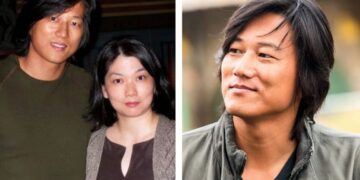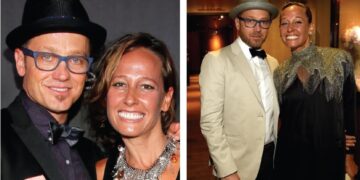When discussing pioneers who challenged societal norms and quietly reshaped American culture, Noel J. Mickelson rarely receives the recognition she deserves. Most people know her primarily as the first wife of actor John Amos, known for his roles in Good Times, Roots, and Coming to America. However, there is a remarkable story hidden beneath the surface—one about courage, cultural defiance, and a quietly lived but profoundly impactful life. Noel J. Mickelson was not just a wife or a footnote in someone else’s biography; she was an artist, an equestrian, and a woman who defied racial norms in a time when doing so could come with steep consequences.
Quick Bio
| Field | Details |
| Full Name | Noel J. Mickelson |
| Known For | First wife of actor John Amos; artist and equestrian |
| Nationality | American |
| Ethnicity | White (Eastern European & Jewish descent) |
| Marital Status | Divorced (formerly married to John Amos) |
| Children | 2 (including Shannon Amos, producer and entrepreneur) |
| Profession | Artist, Equestrian |
| Education | Colorado State University |
| Notable Facts | Married interracially during the Civil Rights Era; raised biracial children |
| Legacy | Cultural pioneer, quiet activist, nurturing mother, inspiration to many |
A Love Story That Defied the Times
Noel J. Mickelson and John Amos met while attending Colorado State University in the 1960s. At a time when interracial relationships were widely frowned upon—and even illegal in many U.S. states—their union was both bold and transformative. They fell in love in an era marked by civil rights struggles, widespread segregation, and deeply ingrained social divisions. Their decision to marry not only crossed racial lines but also challenged cultural expectations, particularly for Mickelson, a white woman of Eastern European and Jewish descent, and Amos, a Black man with deep roots in African-American history.
Their marriage was more than just a personal commitment—it was a political act. Loving v. Virginia, the landmark Supreme Court case that struck down anti-miscegenation laws, wasn’t decided until 1967. That means that in many parts of the U.S., marriages like Noel and John’s were still illegal or highly discouraged. They were willing to confront the uncomfortable stares, legal risks, and social scorn for the sake of love. Their union resulted in two children, including Shannon Amos, a successful producer and entrepreneur.
A Private Life, Public Impact
Despite being thrust into the spotlight by association with a public figure, Noel J. Mickelson largely avoided media attention. She was not a woman who sought fame or validation from the public. Instead, she focused on her family, her passions, and her artistic pursuits. Her privacy, however, does not mean her life lacked meaning or impact. On the contrary, her influence was quietly profound. She raised her children with a strong sense of identity and purpose, emphasizing cultural awareness, education, and self-worth. She nurtured creativity and gave them the tools to explore their passions fearlessly.
This private strength carried great public weight. Women like Noel, who chose to live authentically and raise multicultural families in hostile social climates, laid the groundwork for today’s more inclusive society. They were the quiet revolutionaries, pushing against the tide of racism and ignorance not with protests and speeches, but with love, resilience, and determination.
A Passion for Art and Horses
One of the least-known but most significant aspects of Noel J. Mickelson’s life was her passion for art and equestrianism. An accomplished artist, she created visual works that reflected her experiences, emotions, and deep appreciation for nature and cultural diversity. Her artistry was not just a hobby but a meaningful expression of self in a world that often demanded silence and conformity from women like her. Unfortunately, because she chose a life away from the limelight, much of her artwork remains underrecognized and unarchived.
Her love for horses also defined much of her lifestyle. She was an avid equestrian who found peace and purpose in caring for and riding horses. This connection to animals and nature provided her with both emotional grounding and creative inspiration. It also taught her children the values of discipline, connection, and freedom—qualities they would carry into their own careers and lives.
Raising a Culturally Rich Family
Being a mother in an interracial marriage during the Civil Rights Era came with unique challenges. Noel J. Mickelson faced the complex task of raising biracial children in a racially divided America. She took on this responsibility with strength and sensitivity. Her daughter, Shannon Amos, often speaks about the rich cultural upbringing her mother provided, one that honored both Black and Jewish traditions. This dual heritage was not treated as a burden but celebrated as a strength.
Through her parenting, Noel instilled a strong sense of cultural identity and pride. She made sure her children understood the legacy of both their parents and the historical importance of embracing one’s full identity. Shannon has since gone on to create a platform called Afterglow, focused on healing and spiritual growth, a mission deeply rooted in the nurturing, inclusive upbringing her mother helped provide.
The Weight of Silence and Erasure
One of the more tragic aspects of Noel J. Mickelson’s story is how easily history has forgotten her. While her ex-husband John Amos remains a household name, Noel’s identity is often reduced to a single line in biographies or Wikipedia pages. This erasure is emblematic of a broader pattern where women—especially those who don’t seek fame—are sidelined in historical narratives, despite their deep and enduring contributions.
Her life, while rich with meaning and courage, has not been widely documented. There are few interviews, no books, and almost no public records that delve into her achievements. In a culture that often equates worth with visibility, Noel’s quiet dignity serves as a powerful reminder that impact is not always loud. Her influence lives on in her children, her art, and the legacy of resistance and love that defined her life.
The End of a Marriage, Not a Legacy
Eventually, Noel and John Amos divorced. While the reasons remain private, it’s clear that both continued their lives with purpose and independence. Divorce, especially in high-profile or culturally scrutinized marriages, often leads to public speculation. Yet in Noel’s case, the separation only seemed to strengthen her focus on family, personal growth, and artistic expression.
She remained closely connected to her children and focused on helping them find their paths in a complex world. Her ability to maintain dignity, privacy, and compassion in the face of societal judgment is one of the most enduring parts of her legacy. She lived a life on her own terms, even when the world tried to define her by someone else’s standards
A Woman of Firsts and Fierce Conviction
Though she may not appear in textbooks, Noel J. Mickelson was a woman of firsts. She was one of the first white women to openly and proudly marry a Black man in her social circles during a volatile period in American history. She was among the early advocates for raising biracial children in a society that had little understanding or support for such families. She dared to live her truth before “diversity” became a buzzword and multiculturalism was celebrated in mainstream media.
What made her remarkable was not just her defiance of social norms, but her quiet courage in doing so without needing to prove anything to anyone. She was not seeking validation—she was simply living authentically. That’s what makes her legacy not just historically significant but spiritually inspiring
Cultural Relevance Today
In a time where social justice, racial equity, and representation are at the forefront of public discourse, Noel J. Mickelson’s life has become more relevant than ever. Her story provides a nuanced lens through which we can view modern race relations, interracial family dynamics, and the quiet ways everyday people contribute to societal change. Her experiences echo in today’s ongoing struggles and triumphs for equality and justice.
Her legacy reminds us that history isn’t only shaped by activists, politicians, or celebrities. Sometimes, the most profound influence comes from people who quietly live with integrity and love in the face of adversity. Noel J. Mickelson is a testament to that truth—a woman whose life holds lessons for us all.
Conclusion: Honoring the Hidden Figures
The story of Noel J. Mickelson deserves more than a passing mention. She was a cultural pioneer, a devoted mother, an artist, a horse lover, and a symbol of quiet resistance. While her name may not appear in lights, her life was illuminated by love, purpose, and bravery. By honoring women like Noel, we enrich our collective understanding of what true courage looks like. In a world still grappling with division and intolerance, her story is both a reminder and a call—to live authentically, love courageously, and leave a legacy that speaks louder than words.
Frequently Asked Questions (FAQs)
1. Who was Noel J. Mickelson?
- Noel J. Mickelson was the first wife of actor John Amos. She was an artist, equestrian, and one of the first white women to marry a Black man during a time of social unrest in America.
2. Did Noel J. Mickelson have children with John Amos?
- Yes, Noel and John Amos had two children, including Shannon Amos, a well-known television producer and spiritual entrepreneur.
3. Was Noel J. Mickelson famous in her own right?
- While she wasn’t publicly famous, Noel was a talented artist and lived a meaningful, culturally significant life, especially in the context of race relations in America.
4. What challenges did Noel face in her interracial marriage?
- She and John Amos married at a time when interracial relationships were socially and legally discouraged, facing societal backlash and systemic racism.
5. What is Noel J. Mickelson’s legacy?
- Her legacy lies in her cultural bravery, her role as a nurturing mother, her contributions to art and equestrianism, and her quiet defiance of social norms.


















